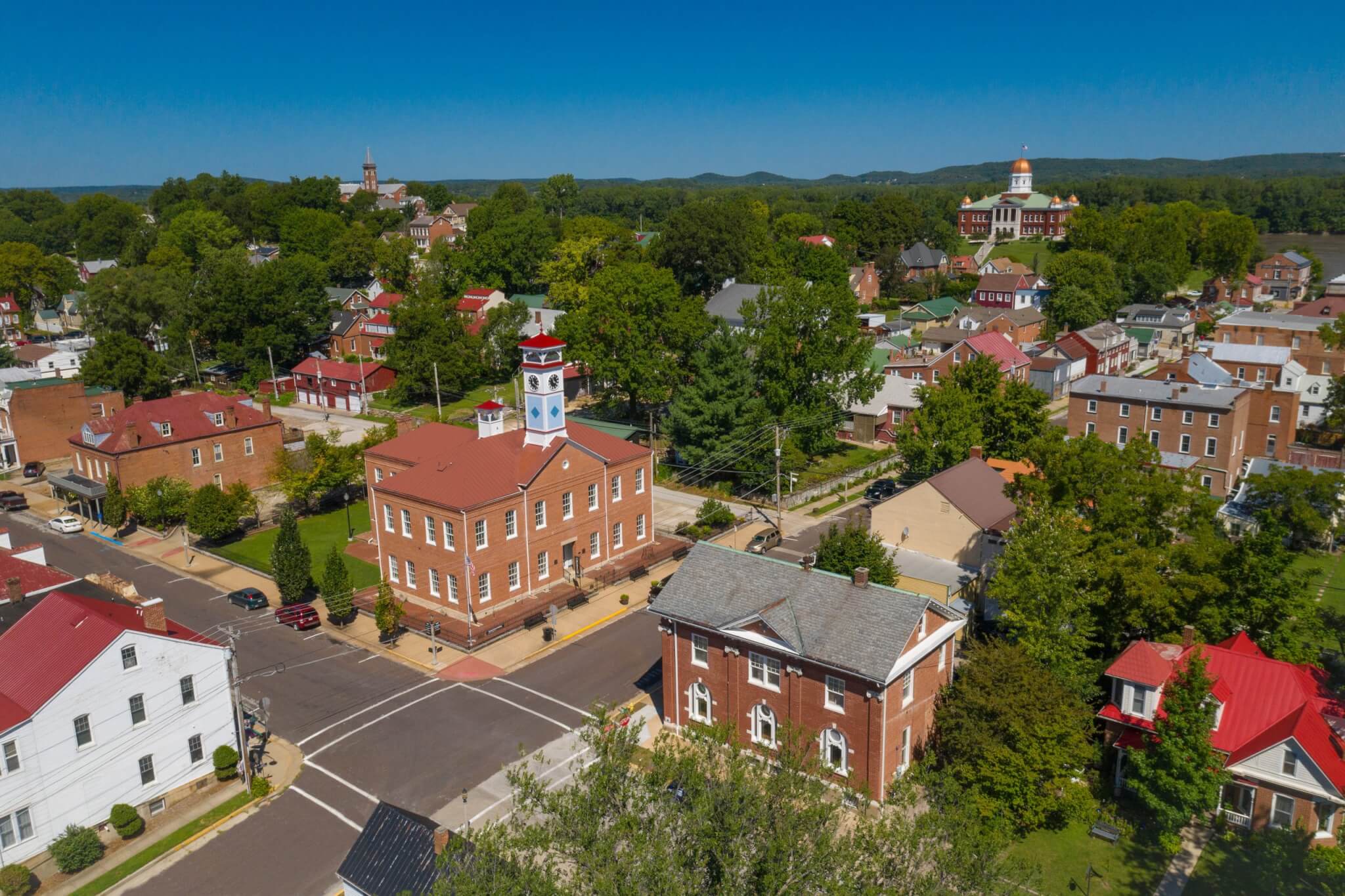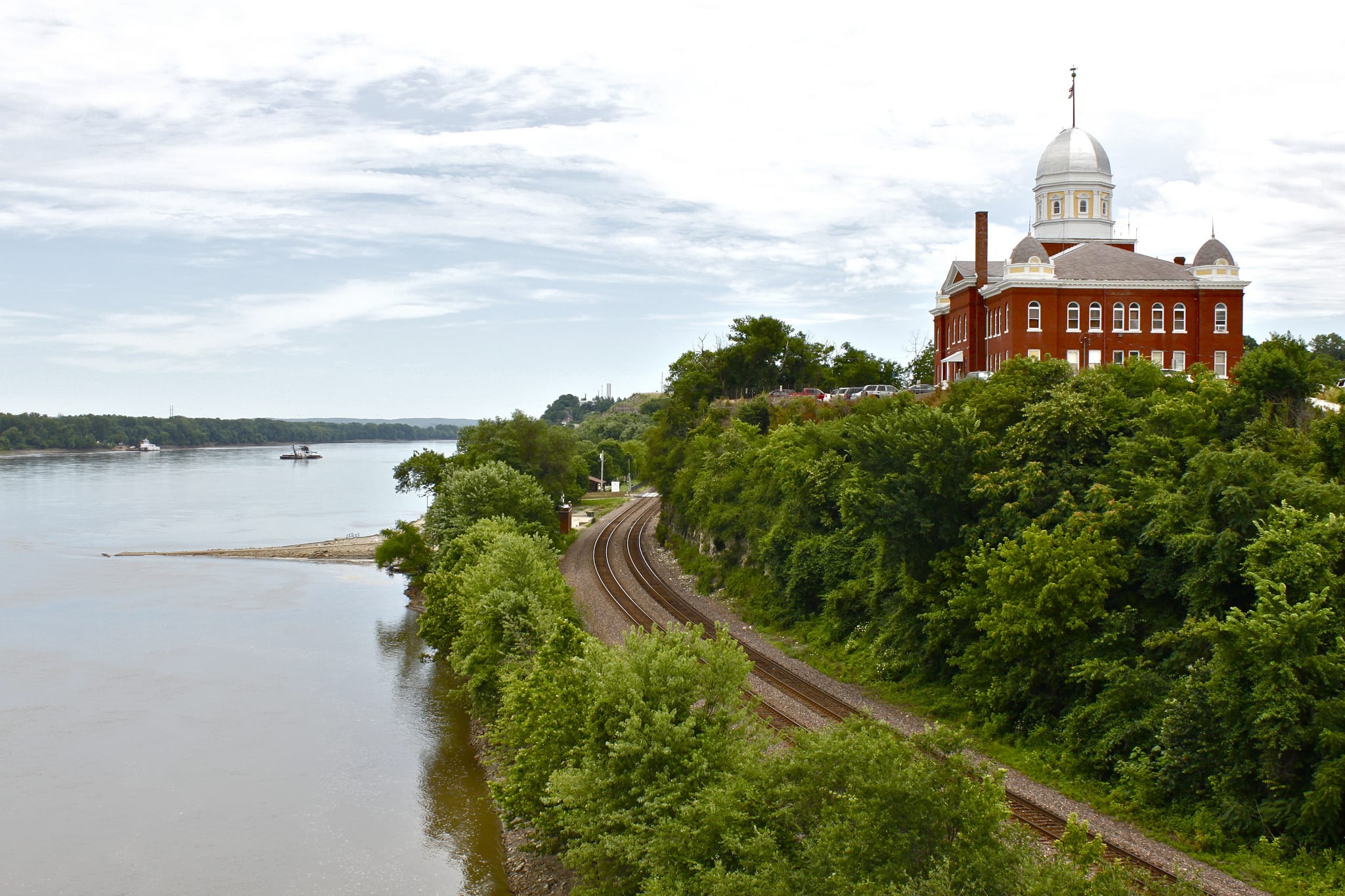
Hermann, Missouri: A Toast to Resilience on the American Rhine
Mist often clings to the rolling hills that cradle Hermann, Missouri, particularly in the quiet hours before dawn. As the sun ascends, it illuminates a scene that feels plucked from a European postcard: cobblestone streets winding past half-timbered buildings, intricate brickwork hinting at generations of craftsmanship, and the faint, sweet scent of fermenting grapes carried on the breeze. Here, on the northern bank of the mighty Missouri River, an unlikely slice of Germany thrives, a testament to enduring heritage, unwavering community spirit, and a remarkable ability to rebound from adversity.
Hermann isn’t just a picturesque town; it’s a living narrative, a saga etched in stone cellars and poured into every glass of its acclaimed wine. Its story begins not with a frontier settlement, but with a meticulously planned utopian vision. In 1837, the German Settlement Society of Philadelphia, seeking to preserve German culture and language in the New World, purchased 11,000 acres of what they believed was prime agricultural land. Their dream was to establish an idealized German community, a place where their traditions could flourish unhindered by American assimilation.
However, reality struck with the force of a Missouri River flood. The land, far from the gentle plains they envisioned, was rugged, heavily timbered, and difficult to farm. Many of the initial settlers, more accustomed to urban life, quickly departed. Yet, a core group remained, driven by a stubborn determination to make their vision work. It was in this struggle that Hermann found its true calling. Observing wild grapevines thriving in the rocky soil, settlers began to experiment with viticulture, planting European varietals like Catawba and Norton. The climate, surprisingly similar to the Rhine and Mosel valleys, proved ideal.
By the mid-19th century, Hermann was blossoming into the heart of America’s wine industry. Stone Hill Winery, founded in 1847, became the second-largest winery in the world before Prohibition, its vast cellars tunneling deep into the bluffs, capable of storing millions of gallons of wine. Other wineries, like Hermannhof, also flourished, their products winning international awards and earning Hermann the proud moniker, "The American Rhine." Steamboats laden with barrels of Hermann wine plied the Missouri River, carrying the taste of Missouri to tables across the nation. The town pulsed with prosperity, its German identity solidified through its viticultural success and the vibrant cultural life it fostered, complete with German-language newspapers, opera houses, and boisterous festivals.
"Our ancestors didn’t just build homes; they built a community, a culture, brick by brick and vine by vine," remarks Sarah Mueller, a local historian and descendant of one of Hermann’s founding families. "They faced immense challenges, but they saw potential where others saw only hardship. That spirit of perseverance is still very much alive here."
Then came the hammer blow: Prohibition. In 1920, the 18th Amendment effectively outlawed the production and sale of alcohol, plunging Hermann into an economic abyss. Wineries that had been the lifeblood of the town were forced to shut down, their cellars emptied, their vines ripped out. Some diversified into growing Concord grapes for juice, others tried mushroom farming in their abandoned cellars, but the vibrant industry that defined Hermann vanished almost overnight. The town, once a bustling center of commerce and culture, went into a deep slumber, its beautiful architecture slowly succumbing to neglect, its spirit muted.
"Prohibition nearly killed us," recounts Robert "Bob" Stone, whose family once owned one of the smaller local vineyards. "It wasn’t just about the wine; it was about our identity, our way of life. For decades, Hermann was a ghost of its former self, a beautiful shell."
The post-Prohibition era brought only a slow, arduous recovery. It wasn’t until the 1960s and 70s that a new generation, inspired by the legacy of their ancestors, began the painstaking work of revival. Visionaries like Jim and Betty Held, who painstakingly resurrected Stone Hill Winery in 1965, and the Dierberg family, who revived Hermannhof, became pioneers in a new era of Missouri winemaking. They replanted vineyards, restored historic cellars, and slowly, painstakingly, brought Hermann’s wine industry back to life.
But the rebirth of Hermann was about more than just wine. It was a conscious effort to reclaim and celebrate its unique German heritage. The Deutschheim State Historic Site, preserving two meticulously restored 19th-century German-American homes, became a cornerstone of this preservation effort, offering a window into the daily lives of early settlers. Local citizens and business owners began to restore the historic district, transforming dilapidated buildings into charming bed and breakfasts, specialty shops, and authentic German restaurants.
Today, Hermann thrives as a premier tourist destination, drawing visitors from across the country and beyond. Its calendar is punctuated by lively festivals that echo its German roots: Maifest in the spring, celebrating the arrival of warmer weather; the immensely popular Oktoberfest, a month-long celebration of German beer, food, and music; and a magical Old-Fashioned Christmas in December, complete with a Christkindl Market. These events are not merely tourist attractions; they are community celebrations, deeply embedded in the town’s identity.
"It’s like stepping into another world, yet it’s right here in Missouri," enthuses Maria Rodriguez, a visitor from Kansas City during Oktoberfest. "The atmosphere is incredible – the music, the food, the friendly faces. You can feel the history everywhere."

Beyond its celebrated wineries and historic charm, Hermann offers a diverse array of experiences. Craft breweries, like Tin Mill Brewery housed in a historic grist mill, and distilleries producing spirits like schnapps and whiskey, have added new dimensions to the town’s beverage scene. Art galleries showcase local talent, antique shops invite leisurely browsing, and the Hermann Farm, a working historical farm, provides educational insights into 19th-century agricultural practices.
The town’s location on the Katy Trail, one of the longest rails-to-trails conversions in the United States, has also made it a popular stop for cyclists. They arrive by the hundreds, pedaling through picturesque landscapes, eager to refuel with a hearty German meal and a glass of local wine before continuing their journey. This influx of outdoor enthusiasts further diversifies Hermann’s appeal, blending its historical charm with a contemporary appreciation for nature and active lifestyles.
"We honor the past, but we’re always looking to the future," states Mayor John Griese, a fourth-generation Hermann resident. "We’ve learned from our history, particularly the lessons of resilience. We understand that our unique identity is our greatest asset, and we work hard to preserve it while also embracing new opportunities and welcoming new ideas."
Indeed, Hermann faces its own set of modern challenges. The Missouri River, a source of life and commerce, can also be a formidable foe, testing the town’s flood defenses. Maintaining the delicate balance between authentic preservation and catering to tourist demands requires constant vigilance. Attracting younger generations to live and work in the small town, ensuring its continued vitality, is another ongoing effort.
Yet, as evening descends upon Hermann, and the lights of the historic district cast a warm glow on the streets, there’s an undeniable sense of enduring strength. The clinking of glasses from a wine cellar, the distant strains of an accordion, the laughter spilling from a busy restaurant – these are the sounds of a town that refused to be forgotten. Hermann, Missouri, is more than just a place; it’s a living testament to the power of heritage, the resilience of a community, and the enduring dream of a small town that found its spirit, and its fortune, in the fertile soil and the rich traditions of its past. It stands as a proud "American Rhine," forever toasting to the indomitable spirit that flows as freely as its acclaimed wines.


